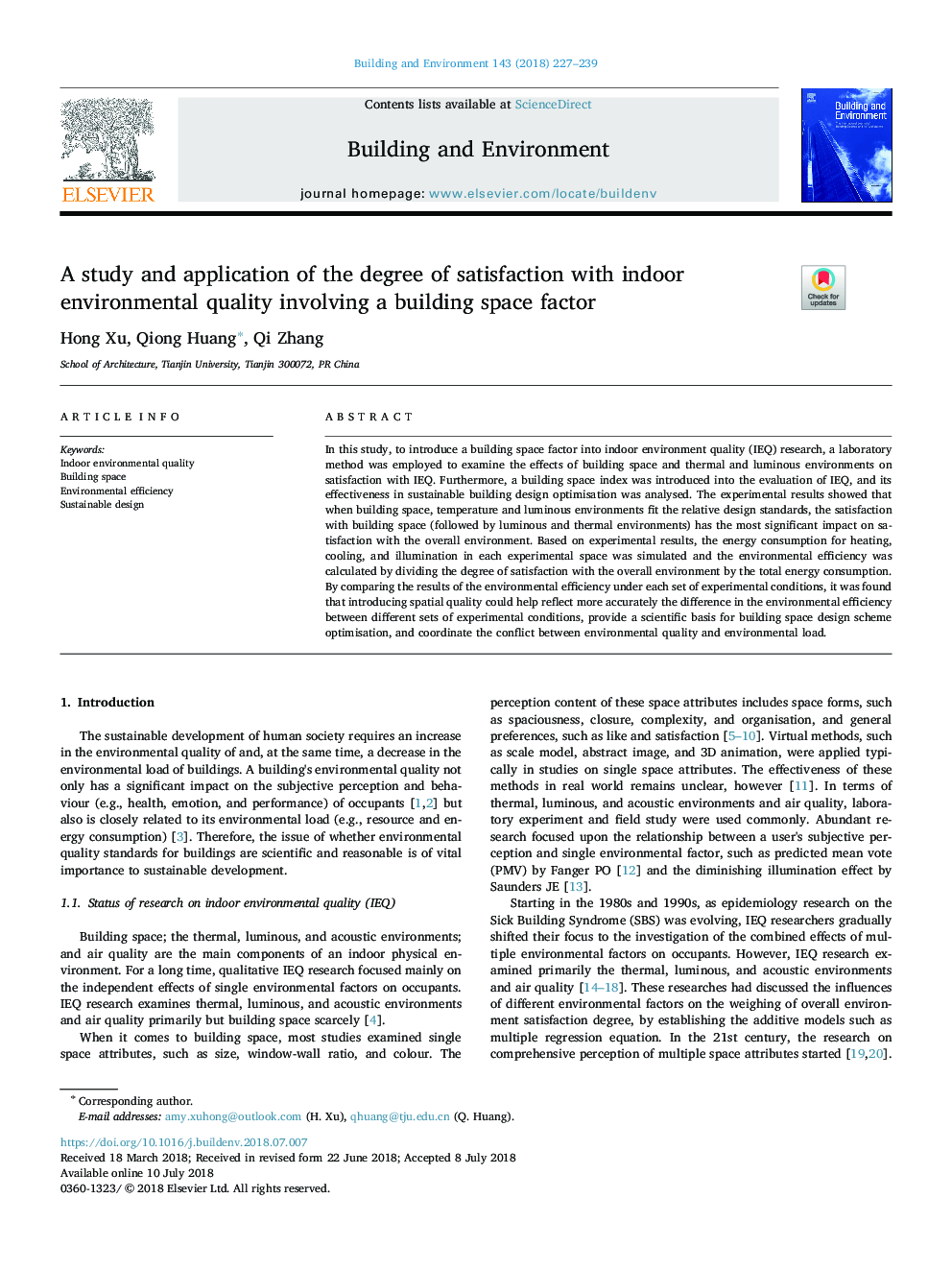| Article ID | Journal | Published Year | Pages | File Type |
|---|---|---|---|---|
| 6696543 | Building and Environment | 2018 | 13 Pages |
Abstract
In this study, to introduce a building space factor into indoor environment quality (IEQ) research, a laboratory method was employed to examine the effects of building space and thermal and luminous environments on satisfaction with IEQ. Furthermore, a building space index was introduced into the evaluation of IEQ, and its effectiveness in sustainable building design optimisation was analysed. The experimental results showed that when building space, temperature and luminous environments fit the relative design standards, the satisfaction with building space (followed by luminous and thermal environments) has the most significant impact on satisfaction with the overall environment. Based on experimental results, the energy consumption for heating, cooling, and illumination in each experimental space was simulated and the environmental efficiency was calculated by dividing the degree of satisfaction with the overall environment by the total energy consumption. By comparing the results of the environmental efficiency under each set of experimental conditions, it was found that introducing spatial quality could help reflect more accurately the difference in the environmental efficiency between different sets of experimental conditions, provide a scientific basis for building space design scheme optimisation, and coordinate the conflict between environmental quality and environmental load.
Related Topics
Physical Sciences and Engineering
Energy
Renewable Energy, Sustainability and the Environment
Authors
Hong Xu, Qiong Huang, Qi Zhang,
